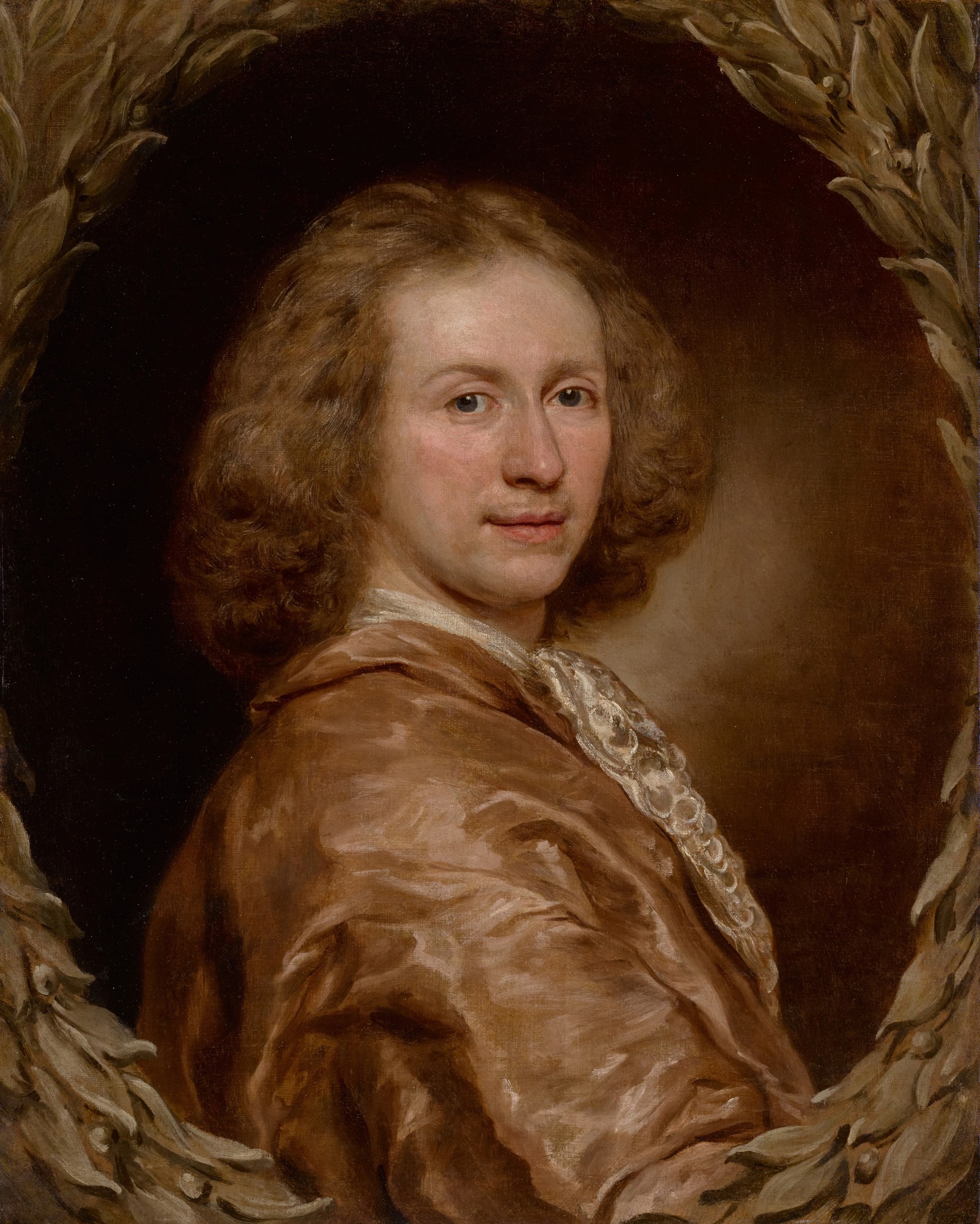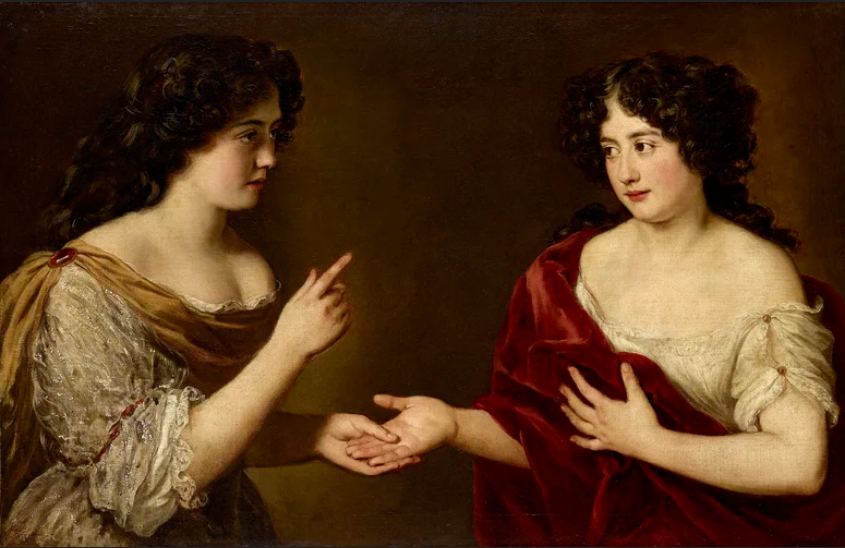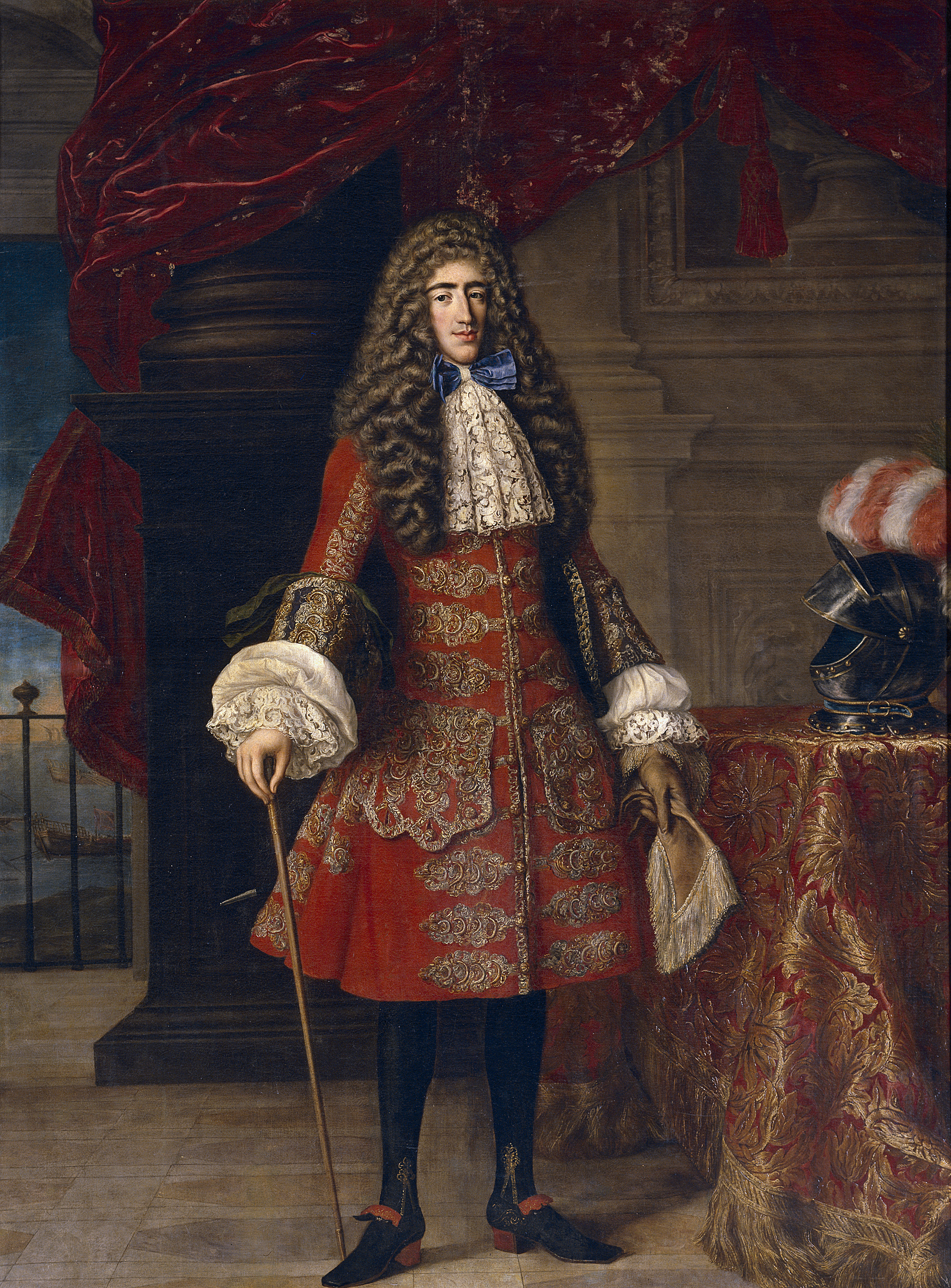Ferdinand Voet on:
[Wikipedia]
[Google]
[Amazon]
 Jacob Ferdinand Voet or Jakob Ferdinand Voet ( 163926 September 1689) was a Flemish portrait painter.Jacob Ferdinand Voet
Jacob Ferdinand Voet or Jakob Ferdinand Voet ( 163926 September 1689) was a Flemish portrait painter.Jacob Ferdinand Voet
at the
at Jean Moust
 Few details about Voet's early life, training and career have been preserved. Voet was born in
Few details about Voet's early life, training and career have been preserved. Voet was born in
in: Arnold Houbraken, ''De groote schouburgh der Nederlantsche konstschilders en schilderessen'', 1718 In Rome Voet's skills as a portrait painter were much in demand at the Papal court and by the Roman aristocracy, including the prominent
at the In Rome Voet lived with the painter-engraver
In Rome Voet lived with the painter-engraver
at the online Encyclopaedia of the
 Jacob Ferdinand Voet or Jakob Ferdinand Voet ( 163926 September 1689) was a Flemish portrait painter.Jacob Ferdinand Voet
Jacob Ferdinand Voet or Jakob Ferdinand Voet ( 163926 September 1689) was a Flemish portrait painter.Jacob Ferdinand Voetat the
Netherlands Institute for Art History
The Netherlands Institute for Art History or RKD (Dutch: RKD-Nederlands Instituut voor Kunstgeschiedenis), previously Rijksbureau voor Kunsthistorische Documentatie (RKD), is located in The Hague and is home to the largest art history center i ...
He had an international career that brought him to Italy and France, where he made portraits for an elite clientele. Voet is regarded as one of the best and most fashionable portrait painters of the High Baroque.Jacob Ferdinand Voet, ''Portrait of Diane-Gabrielle Damas de Thianges Mancini''at Jean Moust
Life
 Few details about Voet's early life, training and career have been preserved. Voet was born in
Few details about Voet's early life, training and career have been preserved. Voet was born in Antwerp
Antwerp (; nl, Antwerpen ; french: Anvers ; es, Amberes) is the largest city in Belgium by area at and the capital of Antwerp Province in the Flemish Region. With a population of 520,504,
as the son of the painter Elias Voet. He was one of the fifteen children; his older brother Carlo moved to Amsterdam and married in 1661 a daughter of the wealthy Joan Coymans and Sophia Trip. Jacob left his native Antwerp and travelled to Rome where he resided from 1663 to 1680. Voet became a member of the Bentvueghels
The Bentvueghels (Dutch for "Birds of a Feather") were a society of mostly Dutch and Flemish artists active in Rome from about 1620 to 1720. They are also known as the Schildersbent ("painters' clique").
Activities
The members, which included ...
, an association of mainly Dutch and Flemish artists active in Rome. Voet drew a picture in charcoal of all the members of the Bentvueghels on the white-washed wall of an inn in Rome that was a popular meeting place of this group. The picture was treasured enough to be spared whenever the walls were repainted.Johan van Bunnik biographyin: Arnold Houbraken, ''De groote schouburgh der Nederlantsche konstschilders en schilderessen'', 1718 In Rome Voet's skills as a portrait painter were much in demand at the Papal court and by the Roman aristocracy, including the prominent
Colonna
The House of Colonna, also known as ''Sciarrillo'' or ''Sciarra'', is an Italian noble family, forming part of the papal nobility. It was powerful in medieval and Renaissance Rome, supplying one pope (Martin V) and many other church and politica ...
and Odescalchi
The House of Erba-Odescalchi () and the House of Odescalchi are branches of an Italian noble family formed by the union of the Erba and Odescalchi families. The Odescalchi family was, since the election of Benedetto Odescalchi as Pope Innocen ...
families.''Il Museo di Roma racconta la città. Guida breve. Catalogo della mostra'', Museo di Roma, Gangemi Editore spa, p. 33 He was patronised by Christina, Queen of Sweden
Christina ( sv, Kristina, 18 December (New Style) 1626 – 19 April 1689), a member of the House of Vasa, was Queen of Sweden in her own right from 1632 until her abdication in 1654. She succeeded her father Gustavus Adolphus upon his death a ...
, who was then resident in Rome. He painted her portrait as well as that of her friend, Cardinal Azzolino.Jacob Ferdinand Voet (1639–1689)at the
National Portrait Gallery National Portrait Gallery may refer to:
*National Portrait Gallery (Australia), in Canberra
*National Portrait Gallery (Sweden), in Mariefred
*National Portrait Gallery (United States), in Washington, D.C.
*National Portrait Gallery, London, with s ...
Englishmen and other Europeans visiting Rome on their Grand Tour
The Grand Tour was the principally 17th- to early 19th-century custom of a traditional trip through Europe, with Italy as a key destination, undertaken by upper-class young European men of sufficient means and rank (typically accompanied by a tuto ...
also commissioned portraits from Voet.
In 1671–1672 Voet received a commission from Cardinal Chigi to paint portraits of young woman who were prominent in Roman society. He created a first series of 37 portraits of the most enchanting women of Rome ('Galleria delle Belle') between 1672 and 1678 for Cardinal Chigi's dining room in his palace in Ariccia (in the Alban hills outside Rome). He later copied and even enlarged the series for other Roman and Italian noble families. This started a rage for portraits of young women in Rome and abroad. In Rome Voet lived with the painter-engraver
In Rome Voet lived with the painter-engraver Cornelis Bloemaert
Cornelis Bloemaert II (1603 – 28 September 1692), was a Dutch Golden Age painter and engraver.
Biography
Bloemaert was born at Utrecht. He studied with his father, Abraham Bloemaert, his brothers Hendrick and Adriaan, and his father's pupi ...
. He was banned from the city by Pope Innocent XI
Pope Innocent XI ( la, Innocentius XI; it, Innocenzo XI; 16 May 1611 – 12 August 1689), born Benedetto Odescalchi, was head of the Catholic Church and ruler of the Papal States from 21 September 1676 to his death on August 12, 1689.
Poli ...
who was scandalized by Voet's portraits of women portrayed with unseemly décolleté. He left Rome and is recorded in Milan in 1680. He was in Florence in 1681 where he worked for the Medici family
The House of Medici ( , ) was an Italian banking family and political dynasty that first began to gather prominence under Cosimo de' Medici, in the Republic of Florence during the first half of the 15th century. The family originated in the Muge ...
.Jacob Ferdinand Voetat the online Encyclopaedia of the
Prado Museum
The Prado Museum ( ; ), officially known as Museo Nacional del Prado, is the main Spanish national art museum, located in central Madrid. It is widely considered to house one of the world's finest collections of European art, dating from the ...
Subsequently, he resided in Turin from 1682 to 1684. He returned to Antwerp in 1684. According to the 18th century biographer Arnold Houbraken
Arnold Houbraken (28 March 1660 – 14 October 1719) was a Dutch painter and writer from Dordrecht, now remembered mainly as a biographer of Dutch Golden Age painters.
Life
Houbraken was sent first to learn ''threadtwisting'' (Twyndraat) fr ...
, Voet set out on his return journey to Antwerp from Turin together with the Dutch painter Jan van Bunnik
Jan van Bunnik (1654–1727) was a Dutch Golden Age landscape painter.
Biography
He was born at Utrecht in 1654 where he was sent to learn draftsmanship from Herman Saftleven in 1668,Adriaen van der Cabel,
 Jacob Ferdinand Voet was a specialist portrait painter. The early Dutch biographer Houbraken noted that Voet painted history paintings and landscapes, but that it was through his royal, ecclesiastical and class portraits that he secured his success. Only portrait paintings and not a single history or landscape painting are currently attributed to him.
Jacob Ferdinand Voet was a specialist portrait painter. The early Dutch biographer Houbraken noted that Voet painted history paintings and landscapes, but that it was through his royal, ecclesiastical and class portraits that he secured his success. Only portrait paintings and not a single history or landscape painting are currently attributed to him.
 Voet specialized in half-length portraits, in which all attention is concentrated on the subject, who emerges from a neutral, dark background. Voet's subjects usually have a reflective expression and very striking, memorable eyes, always large and evocative.Portrait of Hortense Mancini, Duchesse Mazarin, c.1670; Circle of Jacob Ferdinand Voet
Voet specialized in half-length portraits, in which all attention is concentrated on the subject, who emerges from a neutral, dark background. Voet's subjects usually have a reflective expression and very striking, memorable eyes, always large and evocative.Portrait of Hortense Mancini, Duchesse Mazarin, c.1670; Circle of Jacob Ferdinand Voet
at Roy Precious - Antiques & Fine Art He concentrated on decorative elements such as the hair and clothing of the characters. His paintings appear to have been executed with an effortless accuracy and a fluid ease. He was also noted as a painter of miniature portraits. It is likely that the works of the portrait paintersPortrait of a Gentleman with Lace Collar
in the Wakefield Art Gallery
Voet painted a few portraits in a genre that was popular in Flanders at the time: the portrait in garland paintings. Garland paintings are a special type of still life developed in Antwerp by artists such as
/ref> Close collaboration between artists with different specialities was also a common practice in Rome. There are two portrait paintings attributed to Voet that use the portrait in a garland device. They are portraits of women, one in a garland of flowers, the other in a garland of fruit. The '' Portrait of a lady, traditionally identified as a member of the Colonna family'' was originally in the Colonna collection and as a result it is believed it depicts a member of the Colonna family (Auctioned at Christie's on 29 October 2015 in London, lot 99). As in other garland paintings, the garland can be seen as carrying various symbolic connotations. The flowers allude to the sitter's beauty and youth, which are in full bloom. A branch of lilies, depicted in the upper right, refers to her chastity.Jacob Ferdinand Voet (Antwerp 1639–1689 Paris) and attributed to Mario Nuzzi, called Mario dei Fiori (Rome 1603–1673), ''Portrait of a lady, traditionally identified as a member of the Colonna family, small half-length, in a green dress with a white chemise, surrounded by a garland of flowers''
at Christie's Voet's works were widely disseminated through copies by the Roman painter Pietro Veglia and engravings by the Flemish engraver Albertus Clouwet. The Roman publisher Giovanni Giacomo Rossi included Voet's portraits of Cardinals in the publication ''Effigies Cardinalium nunc viventum''.

Pieter van Bloemen
Pieter van Bloemen, also known as Standaart (bapt. 17 January 1657 – 6 March 1720), first name also spelled Peter or Peeter, was a Flemish painter. He was a gifted landscape and animal painter and was very successful with his compositions depict ...
, and Gillis Wenix. They then started out for Paris in the company of a third painter, Jacob van Bunnik who was Jan van Bunnik's brother.
Voet was likely back in Antwerp in 1684. He left his hometown for Paris at some time between 1684 and 1686, was appointed as court painter and died there in 1689, living on Quai de Guénégaud. In Paris he became portrait painter to political and military personalities such as Michel Le Tellier
Michel Le Tellier, marquis de Barbezieux, seigneur de Chaville et de Viroflay (19 April 1603 – 30 October 1685) was a French statesman.
Biography
Le Tellier was born in Paris to a Parisian magistrate, Michel III Le Tellier, and his wife, Clau ...
, François-Michel le Tellier and Marquis of Humières. Jacques d'Agar
Jacques d'Agar (''Danish: Jacob d'Agar'' 9 March 1640 – 16 November 1715) was a French portrait painter born in Paris. He was a pupil of Jacob Ferdinand Voet. He began his career as an history painter, but
he soon abandoned history for portrai ...
was probably his pupil.
Work
 Voet specialized in half-length portraits, in which all attention is concentrated on the subject, who emerges from a neutral, dark background. Voet's subjects usually have a reflective expression and very striking, memorable eyes, always large and evocative.Portrait of Hortense Mancini, Duchesse Mazarin, c.1670; Circle of Jacob Ferdinand Voet
Voet specialized in half-length portraits, in which all attention is concentrated on the subject, who emerges from a neutral, dark background. Voet's subjects usually have a reflective expression and very striking, memorable eyes, always large and evocative.Portrait of Hortense Mancini, Duchesse Mazarin, c.1670; Circle of Jacob Ferdinand Voetat Roy Precious - Antiques & Fine Art He concentrated on decorative elements such as the hair and clothing of the characters. His paintings appear to have been executed with an effortless accuracy and a fluid ease. He was also noted as a painter of miniature portraits. It is likely that the works of the portrait painters
Carlo Maratta
Carlo Maratta or Maratti (13 May 162515 December 1713) was an Italian painter, active mostly in Rome, and known principally for his classicizing paintings executed in a Late Baroque Classical manner. Although he is part of the classical tradition ...
(1625–1713) and Pierre Mignard
Pierre Mignard or Pierre Mignard I (17 November 1612 – 30 May 1695), called "Mignard le Romain" to distinguish him from his brother Nicolas Mignard, was a French painter known for his religious and mythological scenes and portraits. He was a ...
(1612–1695) who were active in Rome at the same time as Voet inspired the comparable elegance of his style, which he combined with the Flemish attention to detail.in the Wakefield Art Gallery
Jan Brueghel the Elder
Jan Brueghel (also Bruegel or Breughel) the Elder (, ; ; 1568 – 13 January 1625) was a Flemish painter and draughtsman. He was the son of the eminent Flemish Renaissance painter Pieter Bruegel the Elder. A close friend and frequent collaborato ...
, Hendrick van Balen
Hendrick van Balen or Hendrick van Balen I (c. 1573–1575 in Antwerp – 17 July 1632 in Antwerp) was a Flemish Baroque painter and stained glass designer. Hendrick van Balen specialised in small cabinet pictures often painted on a copper ...
, Frans Francken the Younger
Frans Francken the Younger (1581 in Antwerp, 1581 – 6 May 1642, in Antwerp) was a Flemish painter who created altarpieces and furniture panels and gained his reputation chiefly through his small and delicate cabinet pictures with historical, m ...
, Peter Paul Rubens
Sir Peter Paul Rubens (; ; 28 June 1577 – 30 May 1640) was a Flemish artist and diplomat from the Duchy of Brabant in the Southern Netherlands (modern-day Belgium). He is considered the most influential artist of the Flemish Baroque traditio ...
and Daniel Seghers
Daniël Seghers or Daniel Seghers (3 December 1590 – 2 November 1661) was a Flemish Jesuit brother and painter who specialized in flower still lifes. He is particularly well known for his contributions to the genre of flower garland painting.I ...
. They typically show a flower garland around a devotional image or portrait. Garland paintings were usually collaborations between a still life and a figure painter.Ursula Härting, ''Review of Susan Merriam, Seventeenth-Century Flemish Garland Paintings. Still Life, Vision and the Devotional Image/ref> Close collaboration between artists with different specialities was also a common practice in Rome. There are two portrait paintings attributed to Voet that use the portrait in a garland device. They are portraits of women, one in a garland of flowers, the other in a garland of fruit. The '' Portrait of a lady, traditionally identified as a member of the Colonna family'' was originally in the Colonna collection and as a result it is believed it depicts a member of the Colonna family (Auctioned at Christie's on 29 October 2015 in London, lot 99). As in other garland paintings, the garland can be seen as carrying various symbolic connotations. The flowers allude to the sitter's beauty and youth, which are in full bloom. A branch of lilies, depicted in the upper right, refers to her chastity.Jacob Ferdinand Voet (Antwerp 1639–1689 Paris) and attributed to Mario Nuzzi, called Mario dei Fiori (Rome 1603–1673), ''Portrait of a lady, traditionally identified as a member of the Colonna family, small half-length, in a green dress with a white chemise, surrounded by a garland of flowers''
at Christie's Voet's works were widely disseminated through copies by the Roman painter Pietro Veglia and engravings by the Flemish engraver Albertus Clouwet. The Roman publisher Giovanni Giacomo Rossi included Voet's portraits of Cardinals in the publication ''Effigies Cardinalium nunc viventum''.
References and notes

Bibliography
*Francesco Petrucci, ''Ferdinand Voet (1639–1689) detto Ferdinando de' Ritratti'', Ugo Bozzi Editore, Roma 2005 *Francesco Petrucci, exhibition catalog ''Ferdinand Voet. Ritrattista di Corte tra Roma e l’Europa del Seicento'', Roma, Castel Sant’Angelo, De Luca Editori, Roma 2005 *Francesco Petrucci, ''Pittura di Ritratto a Roma. Il Seicento'', 3 voll., Andreina & Valneo Budai Editori, Roma 2008, ad indicem *Francesco Petrucci, Ferdinand Voet. ''Ritratto di Pietro Banchieri in veste di "bella"'', in "Quaderni del Barocco", 6, Ariccia 2009External links
{{DEFAULTSORT:Voet, Jacob Ferdinand 1639 births 1700 deaths Artists from Antwerp Flemish Baroque painters Flemish portrait painters Members of the Bentvueghels Court painters